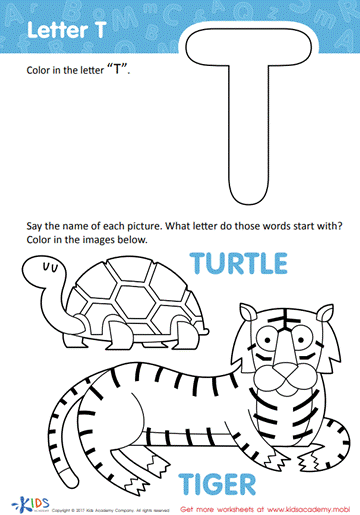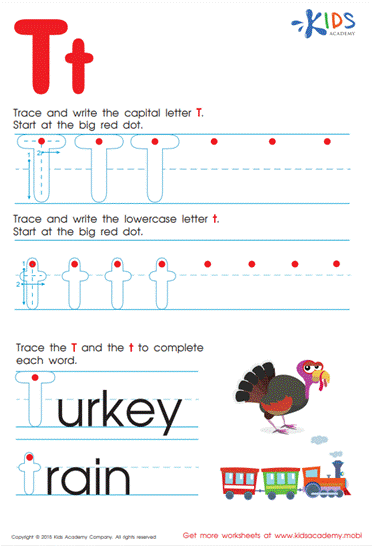-
English
-
English Pre-K
-
Unit 1: Early Literacy Skills
-
ABCs
- Pre-writing Activities
- Letter A
- Letter B
- Letter C
- Letter D
- Letter E
- Letter F
- Letter G
- Letter H
- Letter I
- Letter J
- Letter K
- Letter L
- Letter M
- Letter N
- Letter O
- Letter P
- Letter Q
- Letter R
- Letter S
- Letter T
- Letter U
- Letter V
- Letter W
- Letter X
- Letter Y
- Letter Z
-
Phonological Awareness
- Rhyming Words
- Letter Sounds B, C, D, and F
- Letter Sounds G, H, J, and K
- Letter Sounds L, M, N, and P
- Letter Sounds Q, R, S, and T
- Letter Sounds V, W, X, Y, and Z
- Letter Sounds A, E, and I
- Letter Sounds O and U
- Beginning Sounds
- Matching Letters to Sounds
-
ABCs
-
Unit 2: Vocabulary
-
Common Words
- Sorting Words into Categories
- Color Words
- Verbs and Adjectives
-
Sight Words
- Sight Words 'I' and 'Can'
- Sight Words 'You' and 'Like'
-
Common Words
-
Unit 3: Print Awareness
-
Parts of a Book
- Working with a Book
- Spaces Between Words
- Text and Illustrations
-
Picture Books and Poems
- Picture Book Text Features
- Poem Text Features
- Signs and Labels in the Community
-
Parts of a Book
-
Unit 4: Reading Literature
- Questions About Stories
- Discussing Stories
-
Unit 5: Reading Informational Texts
- Retelling Details in a Text
- Questions About a Text
- Connections Between Events
- Text Features
- Describing Illustrations
-
Unit 1: Early Literacy Skills
-
English Pre-K
-
Math
-
Math for Pre-Kindergarten
-
Logic and Geometry
-
Matching and Sorting
- Same and Different
- Which One Is a Little Different?
- Objects That Go Together
- Sorting by Color and Size
- Sorting The Same Group in Different Ways
- Patterns
-
Shapes
- Shapes in Our Environment
- Naming Shapes Regardless of Size
- Making Shapes in Preschool
- Comparing Shapes
- Relative Positions
- Sorting Shapes
-
Matching and Sorting
-
Early Number Sense
-
Numbers 1–5
- Counting to 3
- Counting to 5
- Arranging Objects up to 3 Objects
- Arranging up to 5 Objects
- Writing Numbers 1–5
-
Numbers 1–5
-
Numbers up to 10
- Counting to 10
- Arranging up to 10 Objects
- Number 0
- Writing Numbers 6–10
- Breaking Down Numbers 6-10
-
Logic and Geometry
-
Math for Pre-Kindergarten
Letter T
Letter T
If you’re done with teaching your child the letter S and are planning on starting with the letter T, then you’ve come to the right place. In this article, we’ll be proposing five letter T activities to help your child smoothly transition to this new letter. A helpful tool to ensure this transition goes as planned is to make a “Letter of the Week'' board, and change the letter displayed on it weekly. Another great way to introduce the letter T to your child is by watching this Kids Academy Letter T Video with them, as it acquaints them with the important aspects of the letter, such as its name, shape and sound. After the proper introduction, you can offer your child activities that help them practice their newly acquired knowledge.
Activities
- Letter T Coloring Sheet: It is a good idea to start off your child’s new week with an easy yet engaging activity, and this coloring sheet is just that. They will learn the shape of the letter through coloring it in, as well as its sound through coloring images of words that start with the letter T, which in this worksheet are the words 'turtle' and 'tiger'. Activities that give the child creative freedom while helping them learn new information are always a welcome addition to their curriculum.

- Letter T Tracing Page: Tracing is also a beneficial activity for preschoolers to learn new letters. In this Kids Academy Letter T worksheet, your child will train their fine motor skills through tracing the letter T in both its uppercase and lowercase forms. This activity will also help further their learning of the letter T as they familiarize themselves with its shape. The second exercise can help your child learn the sound of the letter as they identify the images of the turkey and train provided to them before starting to trace the letter.

- T is for Turkey: An activity we always like to recommend for children is trying to make out the shape of an animal that starts with the letter T from a cutout of that letter. For example, you can help your child make a turkey out of a brown letter T cutout by adding googly eyes, an orange triangular cutout for the beak, a red string for the wattle, and some colorful popsicle sticks or craft feather for the turkey's tail feathers. This activity helps children learn more about the letter they're studying, but also trains their imagination and eye to create and find possibilities.
- Train Track: On a big bubble letter T, have your child glue some matchsticks or cardboard cutouts to create train tracks out of the letter. Have a toy train ready for them to play pretend with the tracks and train. You can alternatively prepare a paper train for them in case a toy one is unavailable. Incorporating words that start with the letter understudy helps in establishing a strong relation between the letter and its sound so that the child can always identify the letter T whenever they hear its sound, and vice versa.
- Triangle T: The beauty of this activity is that with very little material, you can help your child practice the letter understudy while engaging their problem solving skills and certain motor skills. All you need are 4 or 5 colors of construction paper and glue. Cut the construction paper into triangles, and help your child put them together to make the shape of the letter T. You can print out or draw a bubble letter T so they can fill it with the triangles, or keep it freestyle to make it a bit more challenging.
With one activity a day, your child will be ready to move on to a new letter by the end of the week. If you found this article helpful, visit the Kids Academy website to find materials similar to the ones found in this article to help you plan for next week’s letter U.

